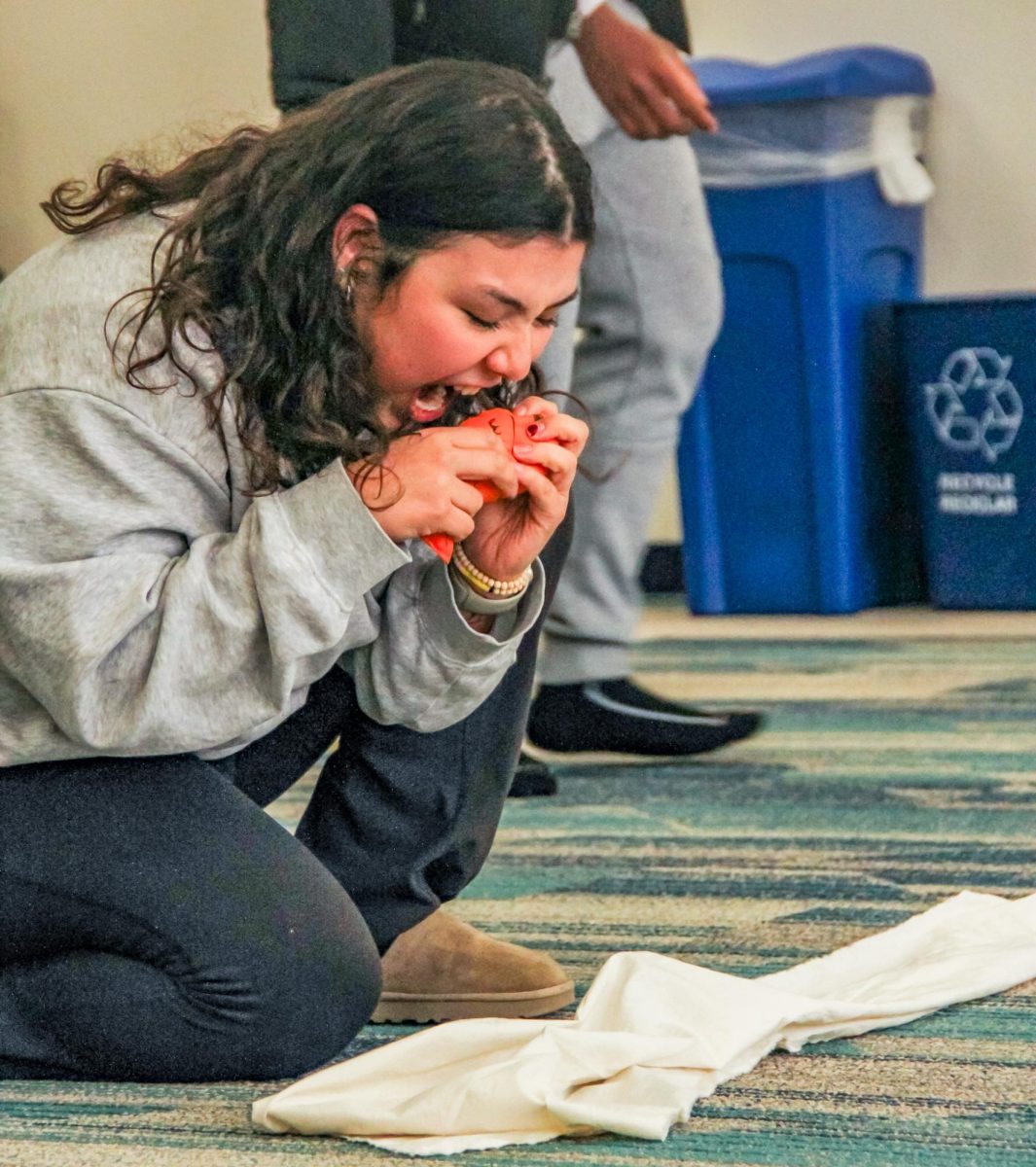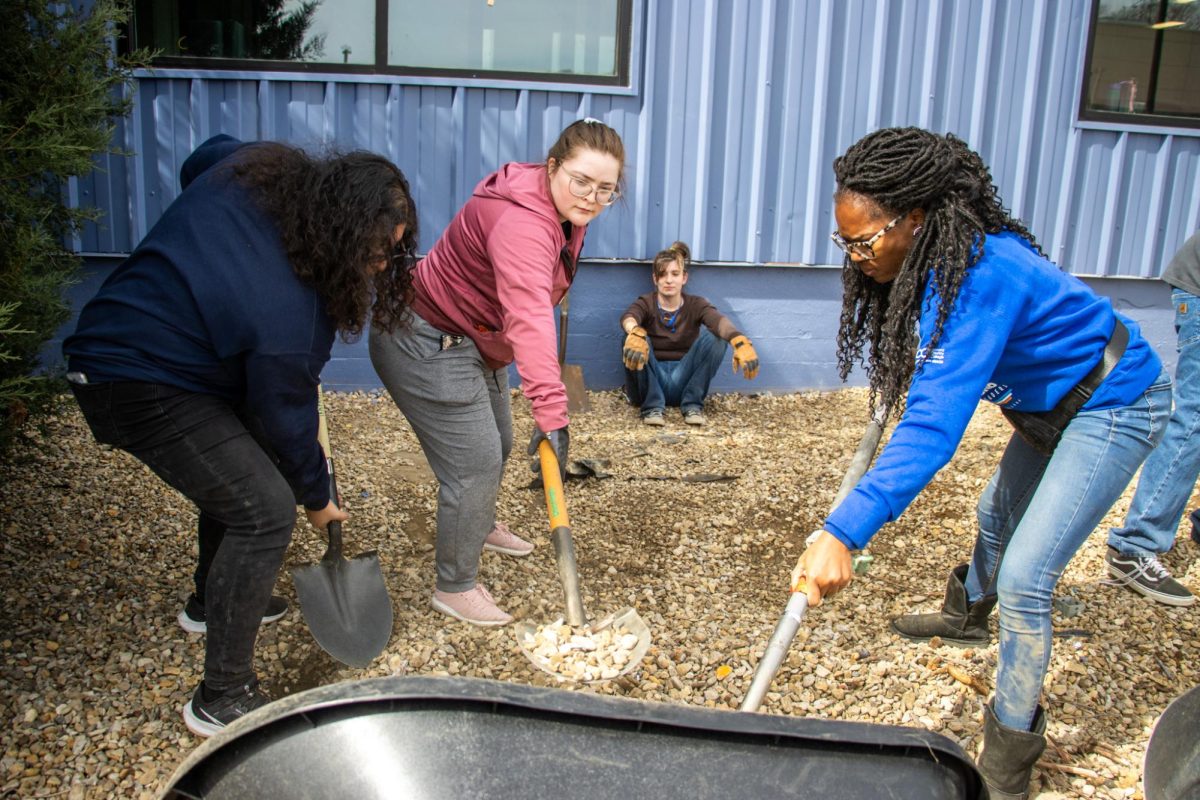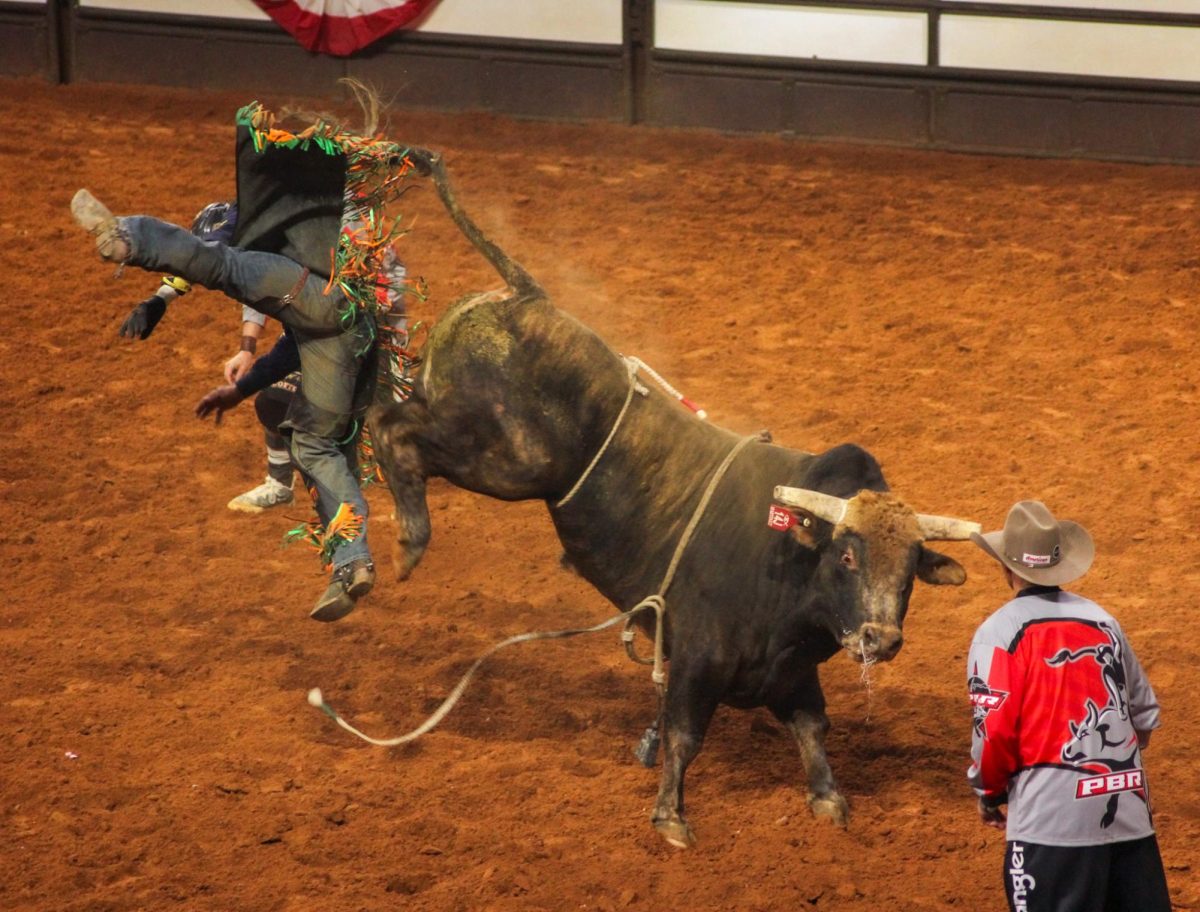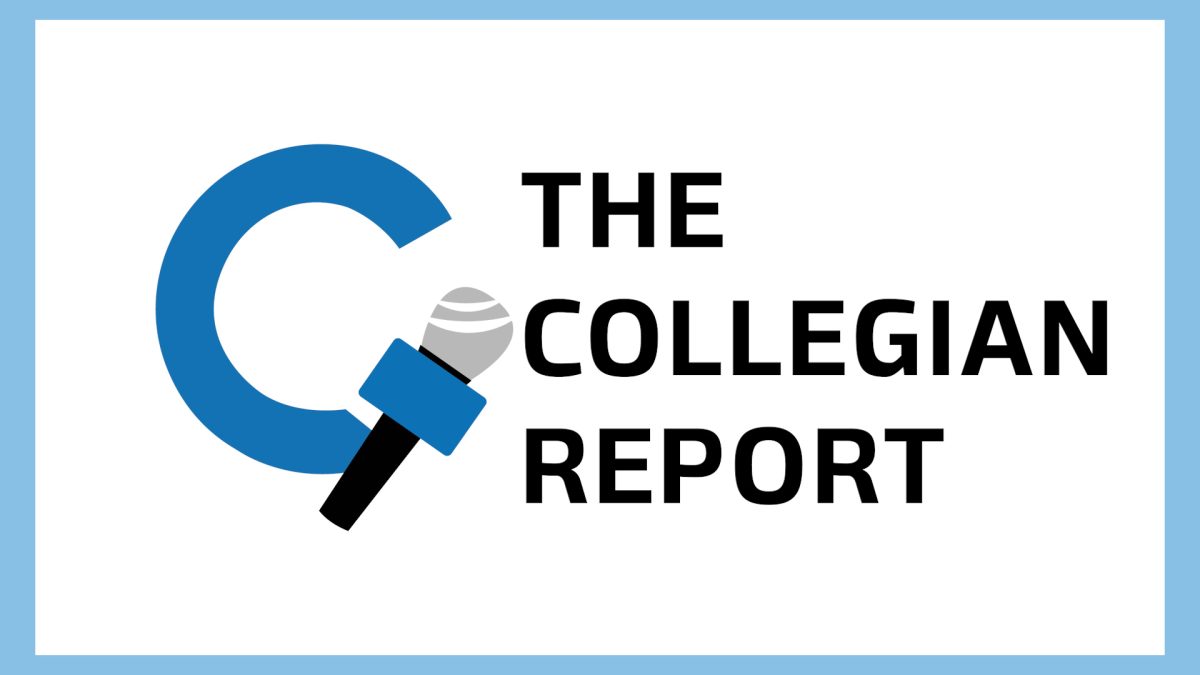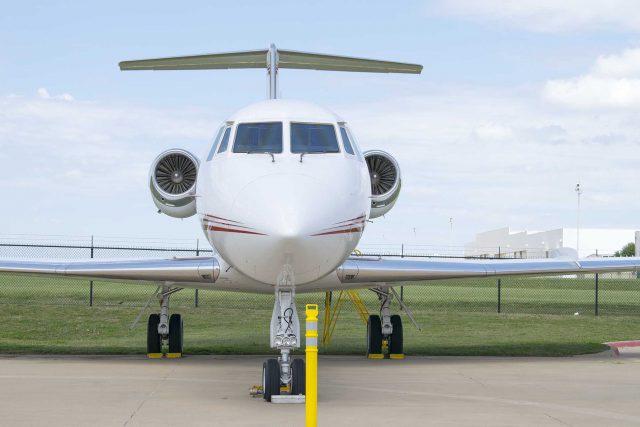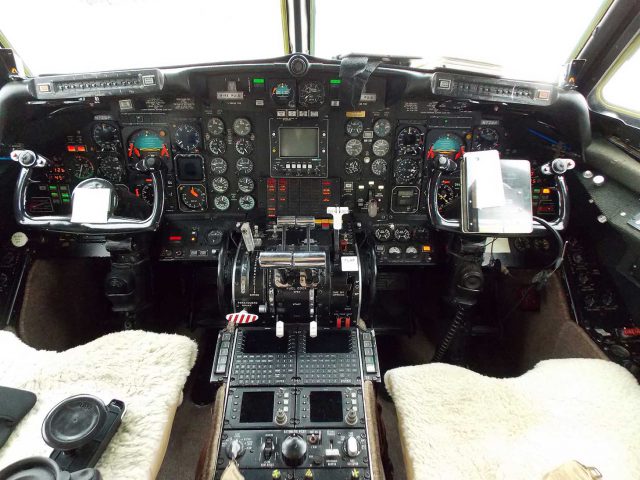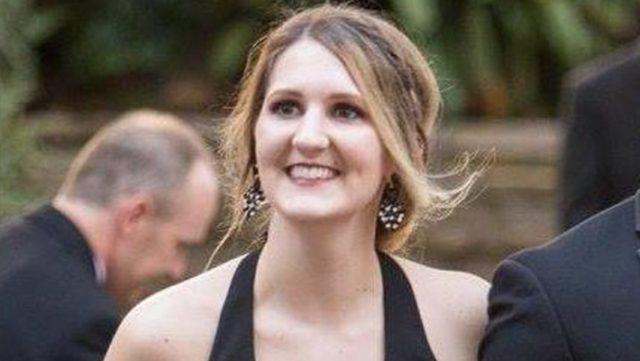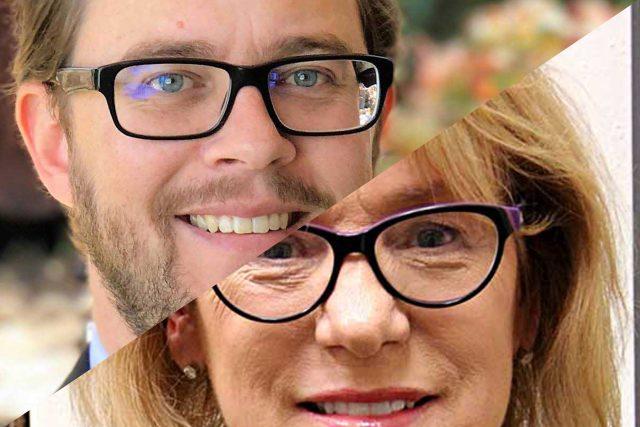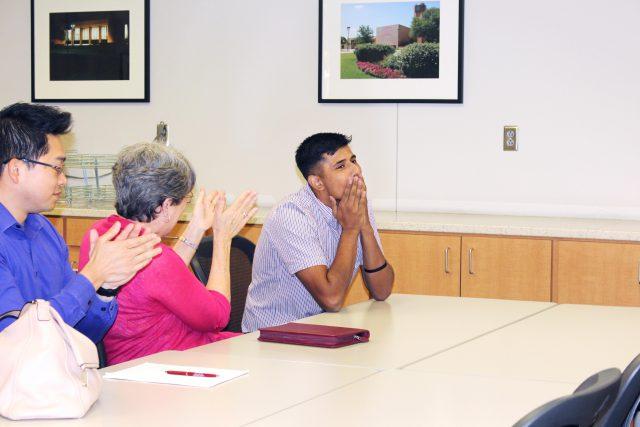By Hannah Lathen/managing editor
TCC’s aviation program is now home to a transcontinental Gulfstream G-II airplane that once flew around a former U.S. vice president and oil industry executives.
Aerospace instructor Darrell Irby said the plane helps the school’s training program because it has all the systems, engines and an auxiliary power unit that an airliner would have.
“It is a large business jet, but it has all the complex systems that you would find on a commercial aircraft,” Irby said. “Students can now get hands-on experience with those systems.”
The idea to retire the airplane at TCC came from Swartz Aviation vice president Chuck Swartz and his longtime business associate, the airplane’s maintenance director Charlie Fontaine. Because the airplane was getting too old, Swartz said, and the previous owner Charles Palmer became unable to fly anymore, they questioned what would happen to the plane. They knew they did not want to see the airplane go to waste.
“We have all been around that airplane for many, many years, and you kind of fall in love with these things — not fall in love with but you do love them,” he said. “They have been so good, and they have been around the world, and they become part of the family. You become attached to them. I was very attached to this particular airplane and didn’t want to see it go to a salvage yard and get dismantled.”
They thought of donating it to an aviation museum, but several told them the airplane was too big for their facilities.
“I thought about donating it to a fire department, but nobody wanted to see it get torched and chopped up,” he said.
Swartz got the idea of donating it to an aviation school. He asked his sales representative and TCC student James Robertson if he thought the college would be interested in taking the plane.
“Chuck called me into his office one day and said, ‘Hey, James, think the school would want a Gulfstream?’” Robertson said. “My eyes got real big. A free Gulfstream. I said, ‘Well, heck yeah, but let me check with some folks.’”
Robertson is a second-year student at TCC working on getting his airframe and powerplant mechanic’s license.
“I did my best to get it in the right people’s hands to say yes or no,” he said. “We were hopeful that this possibility could come to fruition.”
Robertson had to work fast to get approval from the TCC board because the inspection for the plane expired at the end of the month, which would make the plane unflyable.
“When you do these inspections, there is a time, like buying a license, and it was going to expire at the end of March, and we had to get this thing done while it was still flyable because the license was going to expire,” Swartz said.
It was with letters from Robertson and several other aviation students — Christine Fulton, Meshack Musyoka, John Filson — and the chief pilot of the plane Jerry Harbour that helped get approval for the school to take the plane and for Palmer to donate it.
“We had to convince both sides that ‘Hey, this was the best home,’ and that we could actually take it,” Robertson said. “It was a process.”
TCC said yes, and on March 27, the plane was flown to Alliance Airport to stay.
“It is needless to say that we are very happy that this airplane is in a home that it will be appreciated at,” he said.
Palmer also agreed to donate the plane to TCC because of his appreciation of learning.
“He values education, and he thought that would be a perfect fit for this airplane considering how highly he values education,” Irby said. “Rather than give it to a museum or scrap it, he thought it would be much more valuable in a program like ours to educate students.”
Swartz said most students working to get their licenses are trained on smaller basic trainer airplanes. With the G-II, they can learn from a more complex plane.
“It is kind of like the difference between working on a go-cart and working on a Cadillac,” he said.
The G-II was built in 1979 and was owned by Halliburton, a multinational oil service corporation, before being sold to Palmer. Charles McConnell flew the plane for 24 straight years while it was with Halliburton. He wrote a book called Cleared to Climb, which included many of his journeys in the G-II.
“I flew that airplane in 1979 whenever it came out of the factory brand new and flew it until I retired in 2003,” McConnell said. “We flew it all over the world.”
The most famous person he flew during those years was the CEO of Halliburton at the time, Dick Cheney.
“I flew Mr. Cheney for around five years, and he was a wonderful fellow to work for,” he said.
Harbour became the chief pilot for the plane in after it was sold to Palmer. He flew the plane along with Ken Cockrell, a former space shuttle commander.
“It is a two-pilot airplane,” he said. “Every trip we made, we made together. It was just fun for the both of us.”
Not only is TCC receiving a jet airplane, Harbour said, but a piece of the Texas oil business’ history.
“The who’s who in the oil business and conservative politics have flown in that plane at some time or another,” Harbour said.
Harbour was one of the many who wanted to see the airplane end up at TCC.
“I was in a panic,” he said. “I did not want to see that airplane go to a boneyard out there in the desert to sit there and rot.”
All Gulfstreams are excellent airplanes, the best ones that have ever been made, Harbour said, but he said this particular plane is special.
“I would say, without question, that that G-II that the school’s got is the prettiest and best maintained and the best looking and best equipped G-II in existence,” he said.
Harbour and Cockrell flew the plane together for the last time to Alliance Airport. Cockrell was the captain, and Harbour was the first officer. Harbour said he was a little emotional because that was probably the last jet he will ever fly now that he is retired.
“On that side, I was kind of sad, but the gratifying thing is the school will take care of it,” he said. “It doesn’t have to go out into a boneyard and get converted into beer cans.”
The airplane is not yet ready to be used in the classroom, Irby said. A load of aircraft parts, support equipment and aircraft manuals just arrived to help them.
“We want to make sure all of our instructors are familiar with the aircraft systems before we turn it loose and allow the students to work on it,” he said.
Irby said it will definitely be ready for use by next semester.
“It might even be before — this semester — if we can get all that under control,” he said.









